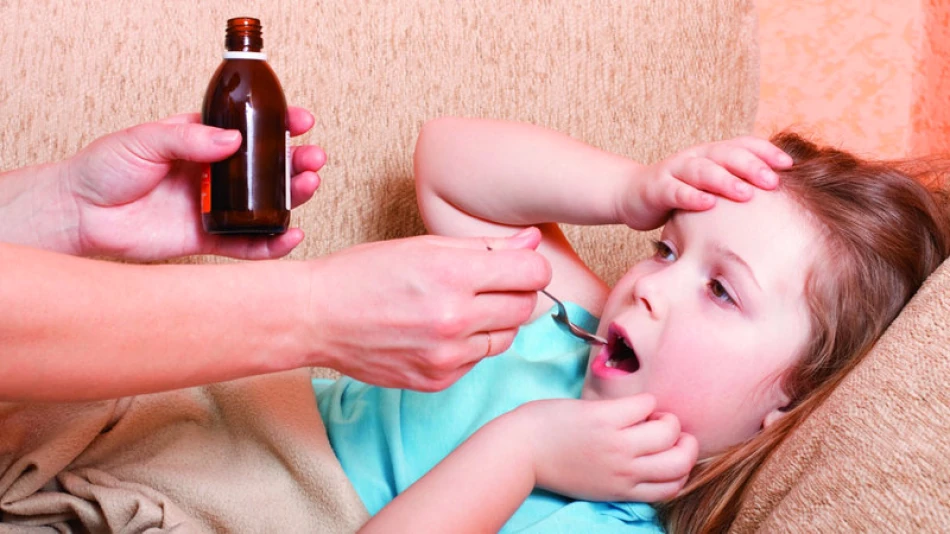
Safeguarding Students: 7 Measures Against Seasonal Infectious Diseases
Back-to-School Health Crisis: UAE Doctors Sound Alarm on Seasonal Disease Surge
As students across the UAE prepare to return to classrooms, medical experts are issuing urgent warnings about an expected surge in seasonal infectious diseases that could disrupt education and strain healthcare systems. Seven leading physicians have outlined critical health protocols to prevent what they describe as an inevitable wave of respiratory infections, eye diseases, and immune-compromised conditions that accompany every school year—but this time with heightened concerns about vulnerable student populations.
The Perfect Storm: Why Schools Become Disease Hotspots
The return to school creates what epidemiologists call a "mixing bowl effect"—previously isolated groups of children suddenly converging in enclosed spaces with poor ventilation, shared facilities, and inconsistent hygiene practices. This year's concerns are amplified by emerging patterns that show younger children, particularly those aged 4-9, face disproportionate risks due to underdeveloped immune systems and behavioral factors.
Dr. Rehab Youssef Al-Saadi, a family medicine specialist, explains that the most common threats include respiratory infections like colds and flu, throat and tonsil inflammation, bronchitis, pneumonia complications, and allergic asthma flare-ups. Additionally, eye-related conditions such as conjunctivitis, eyelid inflammation, and digital eye strain are becoming increasingly prevalent.
The Hidden Danger of "Mild" Symptoms
Medical experts are particularly concerned about parents' tendency to dismiss seemingly minor symptoms. A slight runny nose, occasional cough, or low-grade fever can signal the beginning of highly contagious infections that spread rapidly through school populations. This casual approach to early symptoms has historically led to widespread outbreaks that force mass school closures and overwhelm pediatric healthcare facilities.
Seven Critical Prevention Measures Every Parent Must Know
The medical consensus points to seven non-negotiable health protocols that could determine whether schools face manageable health challenges or crisis-level outbreaks:
1. Complete Vaccination Schedules: Ensuring all required immunizations are current, with particular emphasis on seasonal flu vaccines that many families overlook.
2. Immune System Fortification: Implementing balanced nutrition, adequate sleep schedules, and regular physical activity—factors that research shows can reduce infection rates by up to 40%.
3. Active Symptom Monitoring: Daily health assessments before school, with clear protocols for keeping symptomatic children home regardless of academic pressures.
4. Medical Intervention Protocols: Immediate consultation with healthcare providers when respiratory symptoms persist or worsen, rather than waiting for "natural recovery."
5. Hygiene Reinforcement: Consistent handwashing practices, which studies show many children abandon within weeks of school starting without constant reinforcement.
6. Personal Item Isolation: Strict policies against sharing personal items, water bottles, or school supplies—a practice that has become more challenging in resource-constrained educational environments.
7. Physical Distancing Awareness: Teaching children to maintain distance from visibly ill classmates, despite social pressures to maintain friendships.
The Eye Health Crisis Nobody's Discussing
Dr. Pavli Mouawad Hanna, an ophthalmology specialist, reveals a concerning trend that coincides with school returns: a dramatic spike in pediatric eye clinic visits. The combination of increased screen time for digital learning and close-contact infections creates a dual threat to children's vision health.
The most alarming finding involves epidemic conjunctivitis, which spreads through schools like wildfire via shared towels, contaminated surfaces, and direct contact. Meanwhile, digital eye strain from prolonged device use is creating long-term vision problems that many parents don't recognize until academic performance declines.
Screen Time Guidelines That Most Families Ignore
Current medical recommendations call for strictly limited recreational screen time: one hour daily for ages 5-7, two hours for ages 8-12, and three hours maximum for teenagers. However, these guidelines exclude educational screen time, creating a loophole that many children exploit, leading to daily screen exposure of 6-8 hours.
The 20-20-20 rule—looking at objects 20 feet away for 20 seconds every 20 minutes—remains the gold standard for preventing digital eye strain, though compliance rates among school-age children hover around 15%.
Nutrition as Medicine: The Immune System Foundation
Nutritionist Sheikha Al-Ameri emphasizes that dietary choices made in the weeks before school starts can determine a child's susceptibility to seasonal infections. The target of five daily servings of fruits and vegetables (equivalent to five cups) provides essential antioxidants like vitamins C and A that serve as the immune system's first line of defense.
The most critical nutritional insight involves gut health: the microbiome serves as a primary defense against infections, making probiotic-rich foods like yogurt essential rather than optional. Conversely, excessive sugar and processed food consumption actively weakens immune responses, creating vulnerability windows that coincide with peak infection transmission periods.
Supplement Strategy for High-Risk Periods
Vitamin D supplementation becomes crucial during school transition periods, with recommended daily doses of 400 IU for infants and 600 IU for children and teenagers. Research consistently links vitamin D deficiency to increased respiratory infections, making supplementation a strategic health investment rather than optional wellness enhancement.
The Economic and Social Stakes
Beyond individual health concerns, the broader implications of school-based disease outbreaks extend into economic and social disruption. Mass student absences strain working parents, overwhelm healthcare systems, and create educational gaps that compound throughout the academic year.
The interconnected nature of modern families means that school-based infections rapidly spread to adult populations, potentially affecting workplace productivity and community health systems. This multiplier effect transforms individual health decisions into community-wide consequences.
A Shared Responsibility Framework
The medical consensus emphasizes that successful disease prevention requires coordinated efforts between families, schools, and healthcare systems. This collaborative approach moves beyond individual responsibility to create systematic protections that benefit entire communities.
Schools must implement enhanced ventilation systems, regular sanitization protocols, and health monitoring systems that identify potential outbreaks before they reach critical mass. Parents must commit to keeping symptomatic children home despite academic and social pressures. Healthcare systems must provide accessible, rapid-response services that prevent minor symptoms from escalating into serious conditions.
The evidence suggests that communities implementing comprehensive prevention strategies see 60-70% reductions in school-based infection rates, demonstrating that proactive measures deliver measurable results that justify the investment in time and resources.
 Sara Khaled
Sara Khaled







